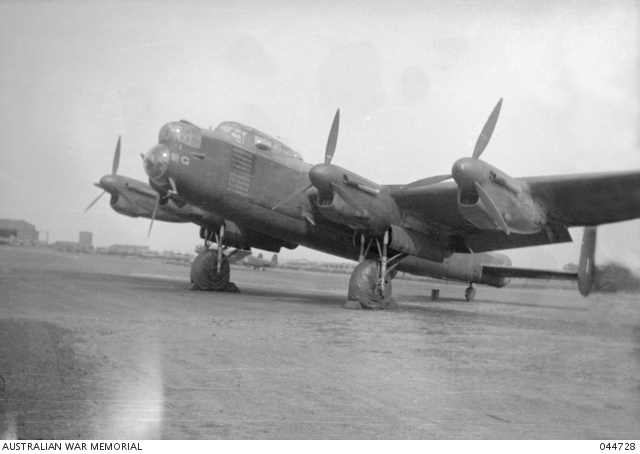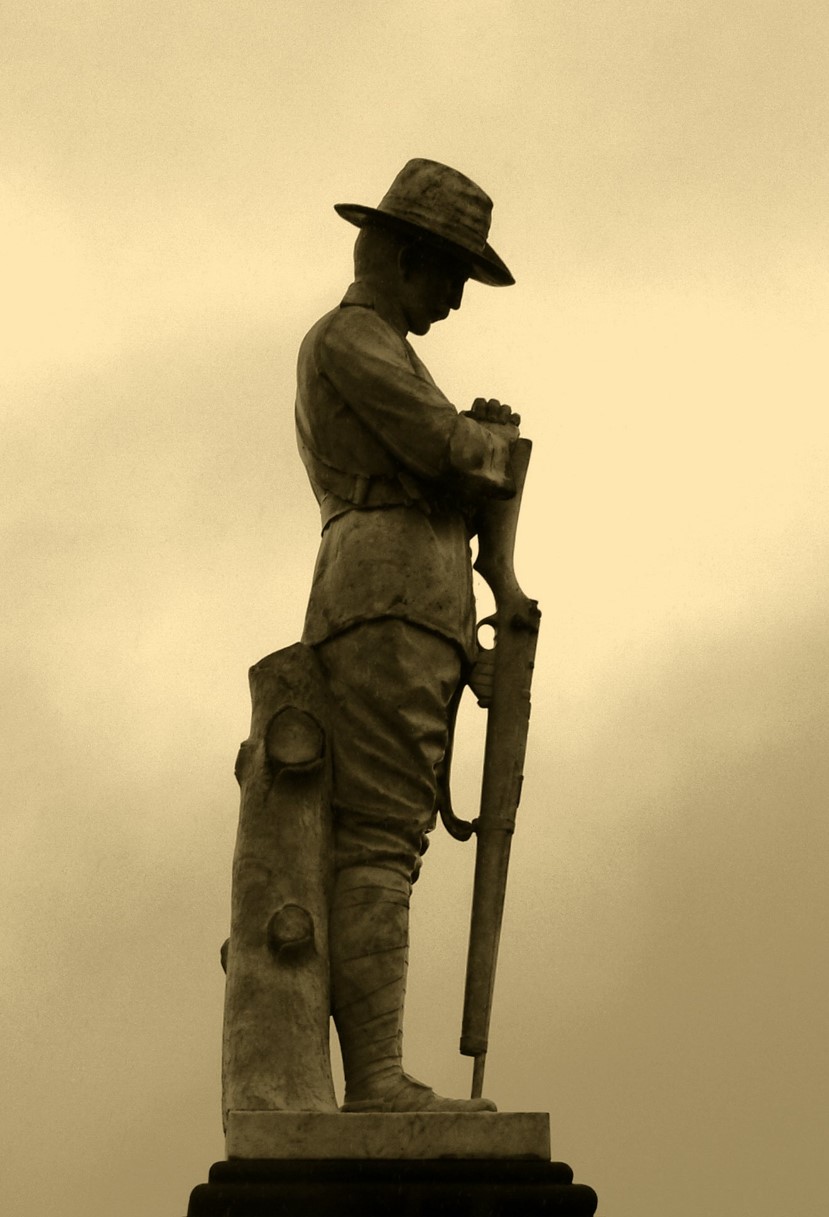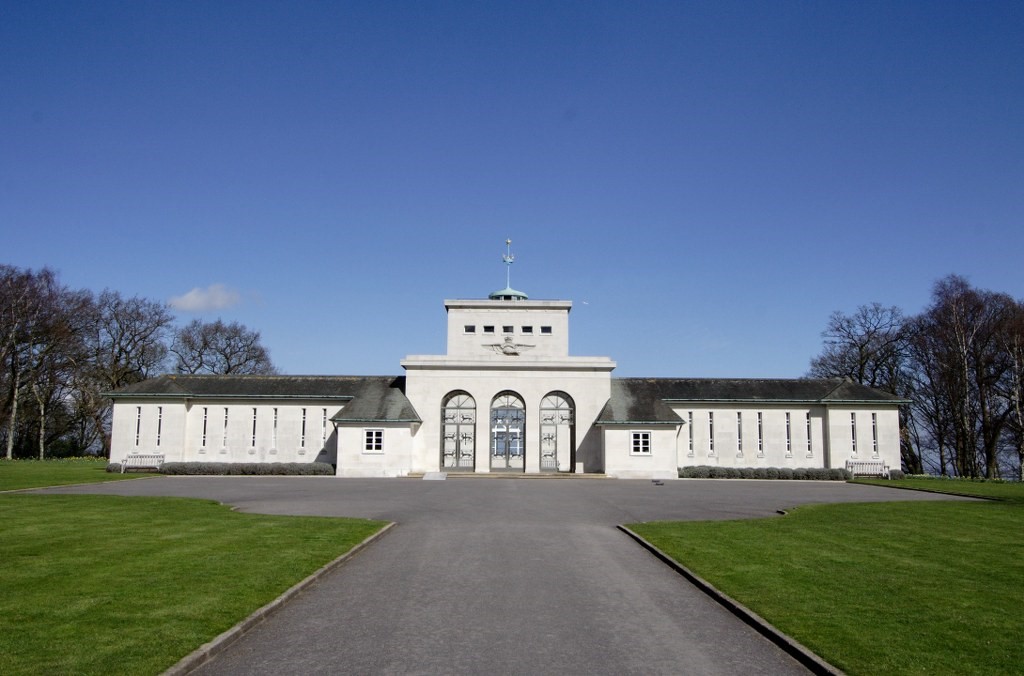Sergeant Charles Gilkeson, the son of Aubrey Fenwick Gilkeson and Eliza Jane Gilkeson (nee Free) was born at Toowoomba in Queensland on 3rd August 1918. He attended the Kingsthorpe State School during the years 1926 until 1929 then the Toowoomba Grammar School where he passed the University of Queensland Junior Public Examination in November 1932. He applied for aircrew training in the Royal Australian Air Force on 24th May 1940. He was enrolled in the Reserve of the R.A.A.F. on 7th June 1940 after swearing an Oath of Affirmation. At the age of 25 years and 3 months he was enlisted into the Citizen Air Force of the R.A.A.F. at No. 3 Recruiting Centre in Brisbane on 8th November 1940 after giving an undertaking that he would serve for the duration of the war and an additional twelve months. He was allotted service number 404719.
At the time of his enlistment he was employed in primary production of cane, wheat and mixed farming. His physical description at the time of his enlistment was that he was 5 feet 7 inches in height and weighed 130 pounds. He had a fair complexion, blue eyes and auburn hair. He stated that he was of the Church of England religion. He gave his next of kin as his father Mr Aubrey Fenwick Gilkeson, residing at Gowrie Homestead at Kingsthorpe.
Sergeant Charles Gilkeson attended No 2 Initial Training School at Lindfield in New South Wales during the period 11th November 1940 until 3rd January 1941 where he received training in the basics of Air Force life. He then joined No. 6 Elementary Flying Training School at Tamworth in New South Wales where he was a student during the period 9th January until 6th March 1941. He then joined No. 3 Service Flying Training School at Amberley in Queensland where he received instruction on Commonwealth Aircraft Corporation Wirraway aircraft during the period 11th March until 26th June 1941 as a member of Course No. 8. Upon graduating as a pilot he was awarded the Flying Qualification Badge on 26th June 1941.
He joined No. 3 Embarkation Depot at Sandgate in Queensland, on 27th June 1941 and No. 2 Embarkation Depot at Bradfield Park in Sydney, New South Wales on 11th July 1941 to prepare for overseas service on attachment to the Royal Air Force. He was promoted to the rank of Temporary Sergeant on 27th June 1941. He embarked on sea transport from Sydney on 17th July 1941. After arriving in England he joined No. 3 Personnel Despatch and Reception Centre at Bournemouth on 2nd September 1941. He joined No. 8 Air Gunners School at Evanton, Ross & Cromarty, Scotland, on 15th September 1941.

Australian War Memorial photograph 044728
Avro Lancaster Mk I (B1 – “G” is for George), the same model Sgt Gilkeson flew.
Sergeant Charles Gilkeson was the Pilot and Captain of a No. 106 Squadron, Royal Air Force Lancaster Mk1 Aircraft L6407 with a crew of seven, that was lost whilst carrying out air firing exercises at Tarberness, Scotland, when it suddenly crashed into the sea on 15th November 1941. The Air Ministry notified his father who resided at Gowrie Homestead at Kingsthorpe in Queensland that he was missing at sea as a result of an aircraft accident three miles off the coast of Tarberness, Scotland. Neither the wreckage nor the bodies of the occupants have ever been recovered. A subsequent report signed by Guy P. Gibson of No. 106 Squadron, Royal Air Force and dated 1st August 1942, says that the wreckage of the aircraft is situated on a tidal mudflat and an investigation of the wreckage is considered impracticable owing to the state of the wreckage. (Guy Gibson was later promoted to Wing Commander in charge of No. 617 Squadron and he led the Dambuster raid, subsequently awarded the Victoria Cross). Witnesses agreed that some form of explosion took place in the aircraft before it dived into the mudflat. The accident occurred at night soon after the aircraft had taken off on an operational mission. The cause of the explosion was unknown but may have been the result of enemy intruder action. No trace was found of Charles Gilkeson and the remainder of the crew, therefore his name appears on the Runnymede Memorial for the Missing in the United Kingdom.
Sergeant Charles Gilkeson’s name is commemorated on Panel No. 122 at the Australian War Memorial in Canberra and locally on the Toowoomba Mothers’ Memorial, the Toowoomba Soldiers’ Memorial Hall Honour Board, the Toowoomba Preparatory School Honour Board, the Kingsthorpe Honour Board and the Toowoomba Grammar School WW2 Honour Board.
Note
His brother, Sergeant Fenwick Moseley Gilkeson, also served in the Royal Australian Air Force during World War 2 and lost his life in a flying battle in the United Kingdom. Another brother, Dudley Scott Gilkeson, served in the Australian Imperial Force with an Australian Commando Squadron.
Toowoomba Grammar School archive records show that he enrolled as a day boarder on 29th January 1936 and that he left the School on 4th December 1931. His parent was shown as Mr Aubrey Fenwick Gilkeson, a farmer residing at Gowrie Homestead.




